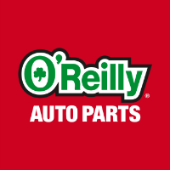-
Welcome to Auto Parts Forum
Whether you are a veteran automotive parts guru or just someone looking for some quick auto parts advice, register today and start a new topic in our forum. Registration is free and you can even sign up with social network platforms such as Facebook, X, and LinkedIn.
Air Filters: Know The Flow
-
Similar Topics
-
By Counterman
link hidden, please login to view announced its new CO₂-reduced filters impregnated with plant-based raw materials, manufactured using renewable energy and packaged in sustainable, recycled material. Filters with cellulose media have previously been impregnated with fossil-based phenolic resin, which provides stability, rigidity and chemical resistance, according to
link hidden, please login to view, which said it has partially replaced this crude oil-based treatment with the plant-based raw material lignin, a natural product contained in wood. Lignin is what makes wood stable and can also have the same effect on filter media, the company explained. This technology is initially being used in selected MANN-FILTER air and oil filters, with more filters will follow. As a result, MANN+HUMMEL said it is reducing the CO2footprint of the relevant lignin impregnation during production by up to 5 percent compared to regular phenolic resin impregnation. In addition, this reduces the amount of crude oil used for impregnation by around 27 percent.
The calculation of the CO₂ values and the calculation method for determining the crude oil savings have been externally verified and validated by ClimatePartner, a German organization that supports companies in calculating, reducing and offsetting CO₂ emissions and offers climate neutrality labels.
Thanks to the switch to lignin, the MANN-FILTER C 17 237 air filter, for example, saves 3.93 tons of CO₂ and more than 4,500 liters of crude oil annually, based on 2024 sales figures, the company said, with the material being used coming from certified sources. Lignin is produced in large quantities as a waste product in paper and pulp production—several million tons are generated worldwide every year.
In the independent aftermarket, the innovative and more sustainable air filters are now available as MANN-FILTER applications for almost 70 million cars and transporters in Europe, while oil filters are ready to use for almost 17.6 million vehicles, the company said. The improved impregnation will now be incorporated into defined series products, with MANN-FILTER products are gradually being converted to lignin.
“This means that customers do not have to choose between different versions, no additional storage space is needed, and no additional part numbers are required,” explains Dr. Lars Spelter, lead engineer for filtration materials at MANN+HUMMEL. “Everything should be kept as simple as possible for our customers. Externally, the partially plant-impregnated filters differ from the conventional ones. They are slightly brownish due to the characteristic color of the lignin they contain and they have a pleasant, natural odor. The innovative products are easy to recognize by the green leaf pictogram on the packaging. Our lignin impregnation is a successful example of how ambitious CO2 reduction targets in product development can also be implemented in series products.”
The new filters combine sustainability with consistently high performance in the usual original equipment quality and meet the strictest requirements of the automotive industry, MANN+HUMMEL explained.
To further reduce CO2 emissions during production, MANN+HUMMEL added it will only use electricity from renewable sources or a combination of green electricity and certificates and guarantees of origin from hydro, solar, or wind power plants from 2025. Energy sources for the generation of process heat are also to be CO2 neutral from 2035 in order to achieve a significant milestone in CO2-free production.
The post
link hidden, please login to view appeared first on link hidden, please login to view.
link hidden, please login to view -
By Clifford Auto Parts
When it comes to modern vehicles, the performance and reliability we expect are largely due to the integration of sophisticated electronics and systems. One such essential component is the OEM (Original Equipment Manufacturer) Control Module. These modules play a critical role in the functionality of a vehicle, ensuring that everything from engine performance to safety features is operating at its best. But what exactly are OEM control modules, and why are they so important?
What Are OEM Control Modules?
OEM control modules are electronic units that control and monitor various functions within a vehicle. These modules are designed and produced by the vehicle’s original manufacturer, which ensures that they meet the highest standards for performance, durability, and compatibility. These modules are responsible for managing crucial systems in a vehicle, such as the engine control system (ECM), transmission control, and braking systems.
Unlike aftermarket parts, which are produced by third-party manufacturers, OEM control modules are specifically designed to match the vehicle’s make, model, and year. As a result, they offer a precise fit and functionality, ensuring the highest level of performance and reliability.
Why Are OEM Control Modules Important?
Enhanced Vehicle Performance: OEM control modules are engineered to interact seamlessly with the other systems in a vehicle. When these modules are working properly, they ensure that the vehicle runs at optimal efficiency, offering better fuel economy, smoother driving, and reduced emissions.
Guaranteed Compatibility: Since OEM control modules are made by the vehicle’s original manufacturer, they are guaranteed to be fully compatible with the vehicle’s systems. This eliminates concerns about compatibility issues that might arise with aftermarket parts, making the replacement or upgrade process much simpler and less risky.
Durability and Reliability: OEM control modules are built to last. They are designed using the same high-quality materials and manufacturing processes used for the original vehicle components, ensuring they offer long-lasting performance. When you choose an OEM module, you're investing in quality that won't let you down.
Warranty and Support: Many OEM control modules come with a warranty, providing peace of mind that any defects or issues will be covered. Additionally, support from the vehicle’s manufacturer ensures that if there is an issue with the part, you have access to reliable customer service and troubleshooting.
Improved Safety: OEM control modules are directly connected to critical safety features in your vehicle, such as airbags, antilock braking systems (ABS), and traction control. Ensuring these modules are in top working order is essential to maintaining the safety of the vehicle.
The Role of OEM Control Modules in Modern Vehicles
Modern vehicles rely on multiple control modules to ensure that everything from the engine to the infotainment system is functioning correctly. Some of the most common OEM control modules include:
Engine Control Module (ECM): This module manages engine functions such as fuel injection, ignition timing, and emissions control, ensuring that the engine operates efficiently. Transmission Control Module (TCM): The TCM controls the vehicle’s transmission system, adjusting shifting patterns for smoother performance. Body Control Module (BCM): This module is responsible for non-powertrain functions, such as lighting, door locks, and interior comfort features. ABS Control Module: This module manages the anti-lock braking system, preventing wheel lockup during heavy braking and improving vehicle stability. These are just a few examples, but in today’s vehicles, the integration of electronics in the form of OEM control modules is essential for ensuring everything functions smoothly.
Choosing the Right OEM Control Module
When it comes to replacing or upgrading an OEM control module, it's essential to choose one that fits your specific vehicle model and requirements. Working with trusted auto parts suppliers, like Clifford Auto Parts, ensures that you get a quality OEM control module at a competitive price. It’s always a good idea to check with an expert to ensure you're selecting the right part to suit your vehicle’s needs.
Conclusion
OEM control modules are integral components of modern vehicles, offering superior performance, reliability, and compatibility. Whether you're replacing a faulty module or upgrading your vehicle, choosing OEM parts is the best way to ensure your car or truck continues to run at its best. With their long-lasting durability and guaranteed fit, OEM control modules are a wise investment in the future of your vehicle. Always choose quality and reliability by opting for OEM when upgrading or replacing essential control modules.
By understanding the importance of OEM control modules, vehicle owners can make informed decisions that ensure their vehicle performs optimally for years to come.
-
-





Recommended Posts
Join the conversation
You can post now and register later. If you have an account, sign in now to post with your account.
Note: Your post will require moderator approval before it will be visible.